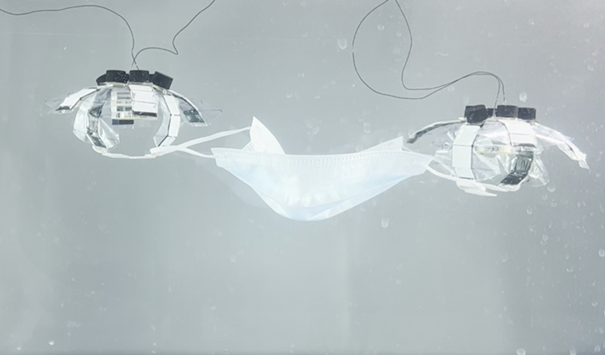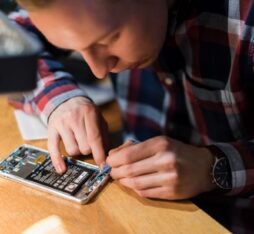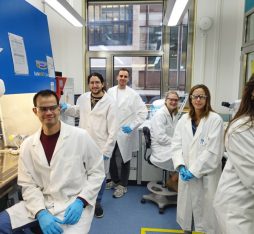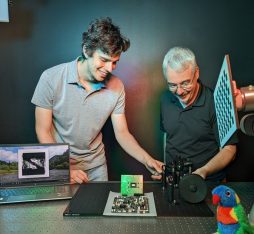● Experts at the Max-Planck Institute for Intelligent Systems are developing jellyfish robots, which may soon contribute to the drive to rid the ocean floor of plastic without disturbing coral-reef species.
● Other bio-inspired projects, among them a robotic turtle that can move around on land and swim under water, are opening up new perspectives for hybrid exploration projects.
It has six arms, comes in wired and wireless versions, can change shape, move independently through water, and can trap objects under its body without physical contact. A perfected version of this silent and inoffensive jellyfish robot developed by researchers at the Max Planck Institute for Intelligent Systems, which does not disturb underwater fauna, could soon be put to work to help clean up the ocean floor. “Thanks to its size and flexibility, this device is particularly suited for work in hard-to-reach areas like tropical coral reefs,” explains Tianlu Wang, a researcher specialised in soft robotics. “Existing submarine robots are very large and noisy, notably because they make use of conventional electric actuators – hydraulic motors and pumps requiring large amounts of energy – which are not environmentally friendly.” Although they occupy less than 0.1% of the world’s ocean area, coral reefs provide a home for at least 25% of all known marine species. Just 16cm in diameter the German-designed robot is capable of collaborating with other similar machines to pick up objects that it would not be able to move on its own.
The jellyfish robot can cohabit and interact with aquatic environments without causing significant vibration that would disturb vulnerable species.
The quest for more environmentally friendly materials
With its flexible actuators developed by soft robotics, this jellyfish robot can cohabit and interact with aquatic environments without causing significant vibration that would disturb nearby species. Capable of moving at speeds of up to 6.1cm/s, it only consumes 100mW of power. “That gives our wireless version a battery life of about one hour”, points out Hyeong-Joon Joo, one of the members of the research team, whose work focuses on the development of artificial muscles. “With our wired version we can control each of the robot’s arms individually, but this is not yet possible with the wireless version, which is one of the reasons why we are trying to improve it and make it more functional,” explains Tianlu Wang. “At the same time, we’re looking at the risks of losing a robot in the water, and working on the development and integration of new, fully biodegradable materials.” The researchers are also hoping to enhance their jellyfish robot with innovations pioneered by another team of experts which, in 2021, published an article in Nature, on another self-powered soft robot that successfully descended to a depth of 10,900 m, in the Mariana Trench.

Two jellyfish robots work together to pick up a surgical mask in the water – Source: Max Planck Institute for Intelligent Systems
The fast-growing development of bio-inspired robotics
Bio-inspired robotics combined with underwater exploration is a growing field of research. In early 2023, a team from Yale University published an article in Scientific American describing an Amphibious Robotic Turtle (ART) with the ability to move around on dry land and underwater, an innovation that could pave the way for new exploration opportunities in environments with challenging conditions. The device in question was also remarkable in that it was a hybrid robot combining soft-robotics technologies enabling it to swim with traditional “hard” robotic joints that allowed it to walk or crawl. Biomimicry offers promising approaches to improve the engineering and functionalities of underwater robots. And these innovations are sorely needed at a time when the observation of marine life and the collection of data on marine environments will play a crucial role in the assessment of climactic risks, notably with regard to survival of the ocean’s flora and fauna. The same applies to underground exploration, a field that has recently been dynamized by the development of a robotic earthworm by an Italian technology institute (the Istituto Italiano di Tecnologia). The device offers a host of promising functionalities with the potential to break new ground not only in subterranean exploration, but also in the provision of assistance to rescue missions in confined spaces, and underground prospecting undertaken within the framework of missions to other planets.











